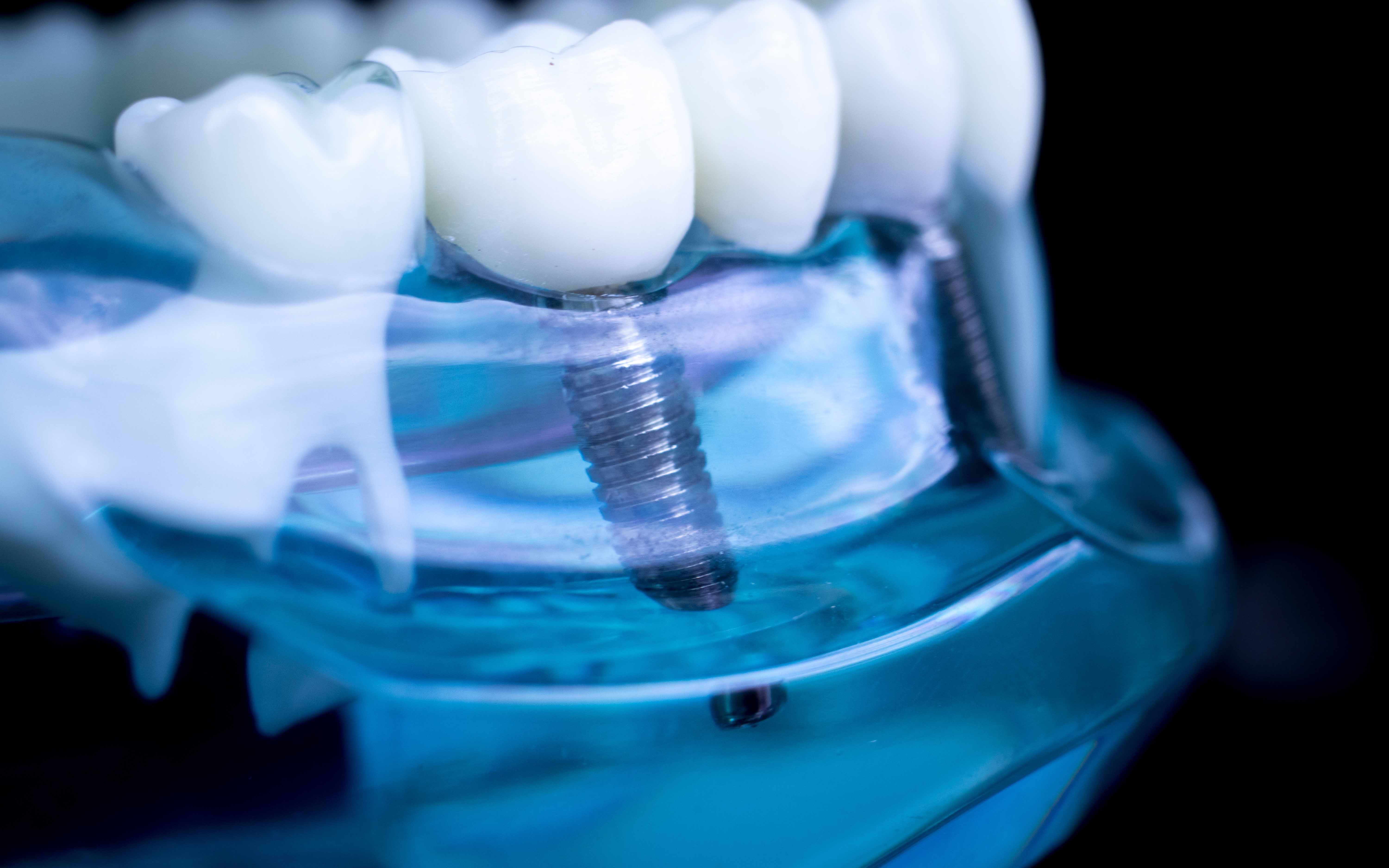
What is a Dental Implant?

Dental implants are permanent metal screws that replace tooth roots, designed to replace missing teeth. These screws fix artificial teeth such as dental bridges, dentures or dental veneers in place. While most dental implants are produced with titanium, some are made of ceramic. Both titanium and ceramic-based implants can be used safely, and both are biologically compatible with tissues in the mouth.
Dental Implant Applied Into the Mouth?
An expert surgeon places the implant in your jaw to suit oral surgery procedures . After the implant is placed and healed within the root, the oral and maxillofacial surgeon places a crown on it. Your dentist may supplement your implants with crowns, bridges or dentures, specific to your situation, to ensure that your oral health is properly developed and restored .
Who Needs a Dental Implant ?
Dental implants can be applied to people with one or more missing teeth. If you have tooth loss due to one or more of the reasons listed below , you may need a dental implant ;
- cavities caused by tooth decay
- Tooth root fractures
- Bruxism , i.e. tooth loss due to clenching
- Losses due to gum diseases
- Cavities formed as a result of a blow to your mouth and jaw
- Congenital tooth deficiencies
dental How Should You Prepare for the Implant ?
dental Before the implant procedure is performed, you need to prepare by paying attention to the following points;
- You should inform your dentist about the medicines you use. If you are using blood thinners, you should definitely mention this. If you need to stop using the drugs you use before the application, your doctor will inform you.
- sedation , i.e. sedative drugs to be used during the operation, you should share this with your doctor.
dental What Stages Does Implant Surgery Consist?
dental During the implant operation, the oral and maxillofacial surgeon can proceed with the following stages;
- Anesthesia: Local anesthesia will be applied to numb your gums. If you have opted for sedation , appropriate medications will be given.
- Making an incision: When relief is provided after local anesthesia or sedation , your surgeon makes an incision in your gums as large as the implant . Thanks to the incision, the bone under the gum is exposed and your surgeon places the implant where it is needed.
- the chin for the implant : Your surgeon uses a series of special tools and adjusts the opening to create an opening in the jawbone and place the implant at the correct diameter.
- dental implant : After the opening in the jawbone is created, the dental implant is carefully placed by your surgeon.
- Closing the incisions: In the final stage, your surgeon closes the incisions in the gums with sutures appropriately.
What Should Be Considered After the Dental Implant Operation?
Your oral and maxillofacial surgeon will give you a detailed list of instructions you need to pay attention to after the surgery. In addition, various measures will be taken to prevent possible infections that may occur in the mouth. In addition, things you can do to reduce your risk of pain and discomfort include:
- Take the prescribed medication as directed by your doctor.
- Avoid exercise and heavy lifting for at least 72 hours. An increase in your heart rate can increase your possible pain and swelling in the mouth.
- If the implant was applied to one side of your mouth, chew your food with the non- implanted area. If implanted on both sides, eat soft food for a few days.
- Do not neglect your oral and dental care. Brush your teeth and use dental floss.
- the implanted area as directed by your dentist.